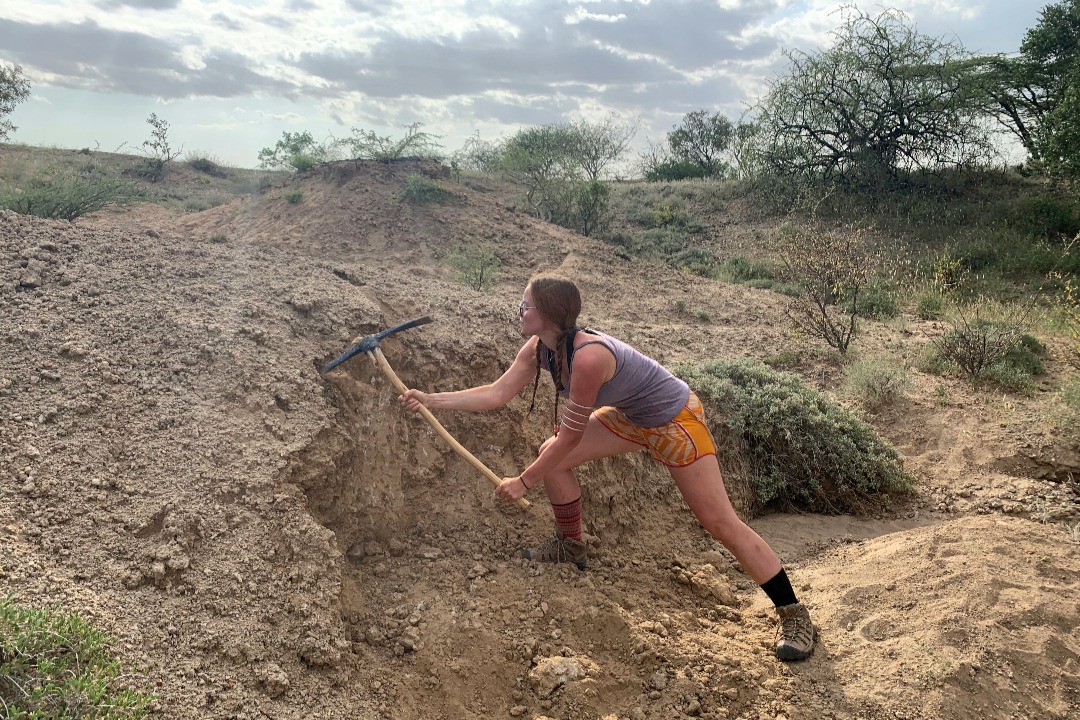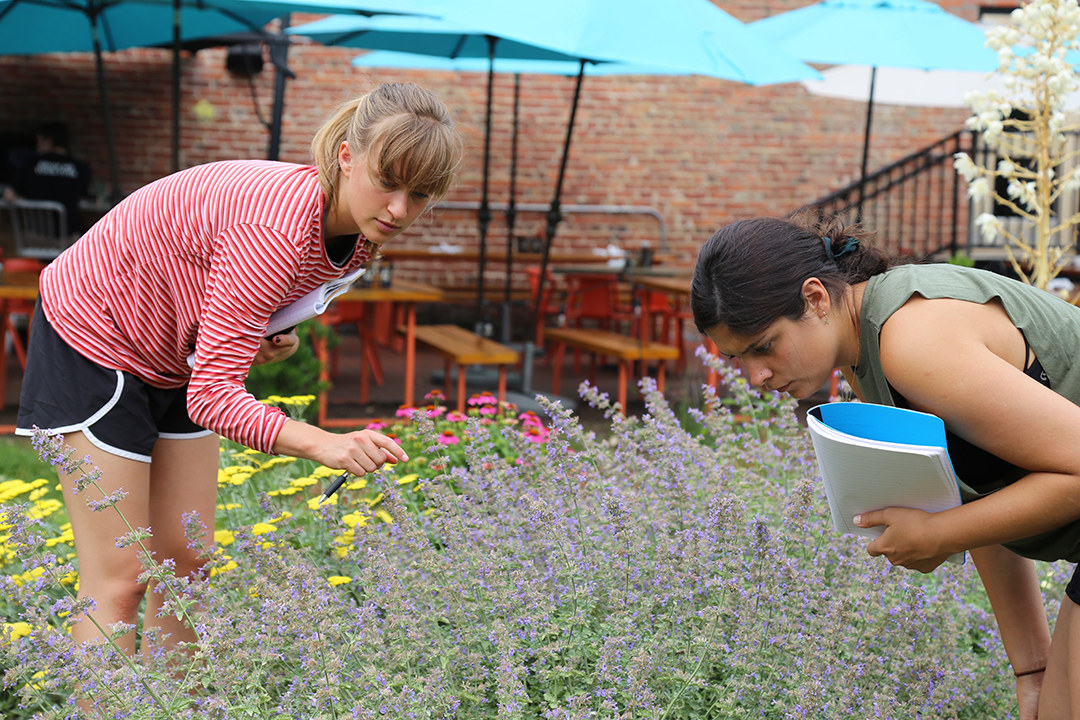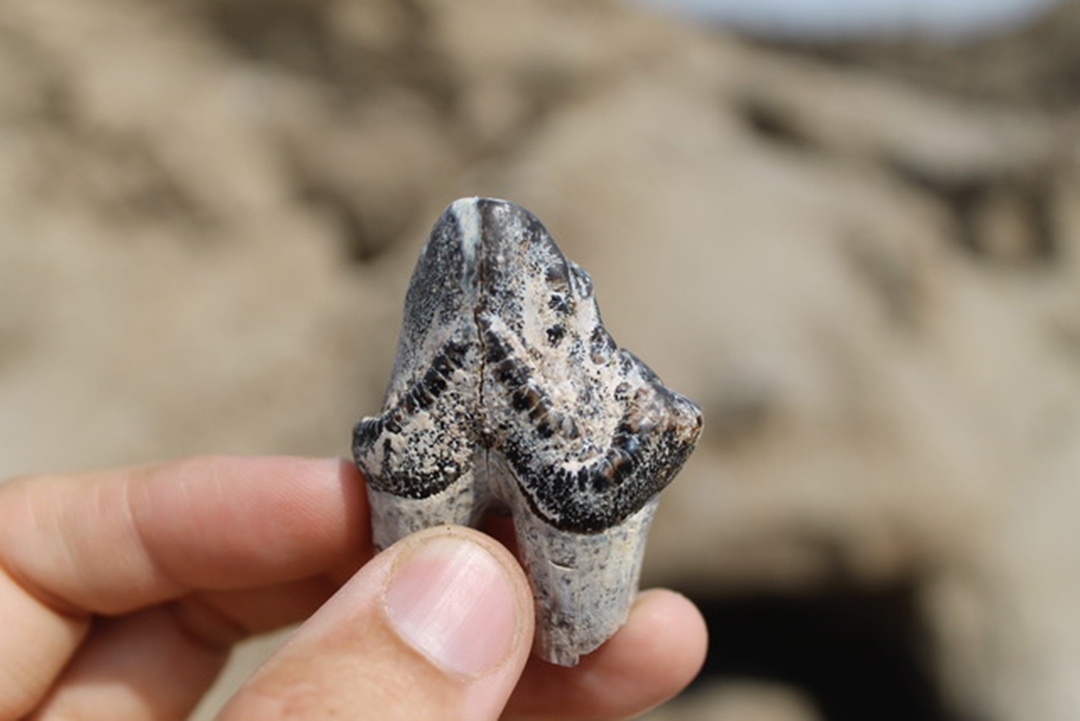By Kristen Mitchell
Noelle Purcell, a senior in the Columbian College of Arts and Science, spent the first half of her summer in northern Kenya trying to better understand the environmental context of human evolution by studying the morphology of preserved ancient soils called paleosols. The preserved ancient soils contain information about atmospheric composition, which sheds light on what the Earth’s environment was like in the past.
Ms. Purcell, who is double majoring in biological anthropology and archaeology, received a Luther Rice Undergraduate Research Fellowship to pursue her research examining the relationships between the physical structures of paleosols and their chemical makeup. David Braun, associate professor of anthropology, is her faculty mentor.
Read more about what Ms. Purcell discovered this summer and her plans for what is next:
Q: What question are you trying to answer with your research?
A: Because delta C-13 and O-18 isotopes, which impact chemical makeup, serve as records and imprints of paleosol environmental conditions, I’m interested to know if the physical form and structure of these paleosols look and behave the same way. I’m curious if researchers can correlate physical characteristics to isotopic value in order to get an idea of what the environment was like in the geological past.
Q: What have you been doing this summer to advance your research?
A: This summer, I attended the Koobi Fora Field School near Lake Turkana in northern Kenya. Over the course of the field school, I exposed and sampled 20 paleosols from different time periods and regions near Lake Turkana. These samples will be analyzed for their isotopic signatures. Analysis and modeling will then indicate how well their isotopes correlate with their physical morphologies, such as soil grade, ped structures, slickenside structures and more.
Q: What got you interested in studying the environmental context of human evolution?
A: I have wanted to study human paleobiology since I was 10 years old, but it was taking Introduction to Biological Anthropology with Andrew Barr that piqued my interest in paleoecology, the ecology of fossil animals and plants. Dr. Barr studies paleomorphology and ecology at many sites in Africa’s Great Rift Valley, and his work with analyzing the physical remains of animals is an excellent example of how the study of human paleobiology and paleoecology can help frame and explain modern problems such as climate change.
Q: What do you hope to have learned by the end of the summer?
A: Based from preliminary analyses, it appears that there is a correlation between some physical structures of paleosols and their isotopic data. If I am able to refine this, I may be able to offer a guide to paleosol morphology that can be utilized by paleoanthropologists in the field as a proxy for estimating environmental conditions at the sites at which they work. This is particularly helpful for field work, since many samples which reveal the paleoecology of sites cannot be run until the post-season after researchers leave the region of study. My research may be able to offer an on-the-spot analysis, perfect for helping make decisions in the field.
Q: What is one challenge you’ve faced so far in your work, and how have you tackled it?
A: The biggest challenge I have faced in the field is that paleosols are not systematically documented in primary literature on paleoecology. There is not any standardized guide or list of characteristics that are recorded with every sample collected in the field. Although this is something I hope to rectify with my research and provide a guidebook for describing these ancient soils, it has certainly been tricky determining how to classify some of the physical structures.
To learn more about available research opportunities contact the GW Center for Undergraduate Fellowships and Research.




